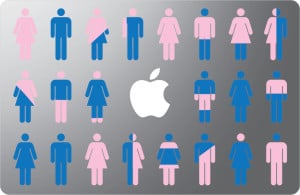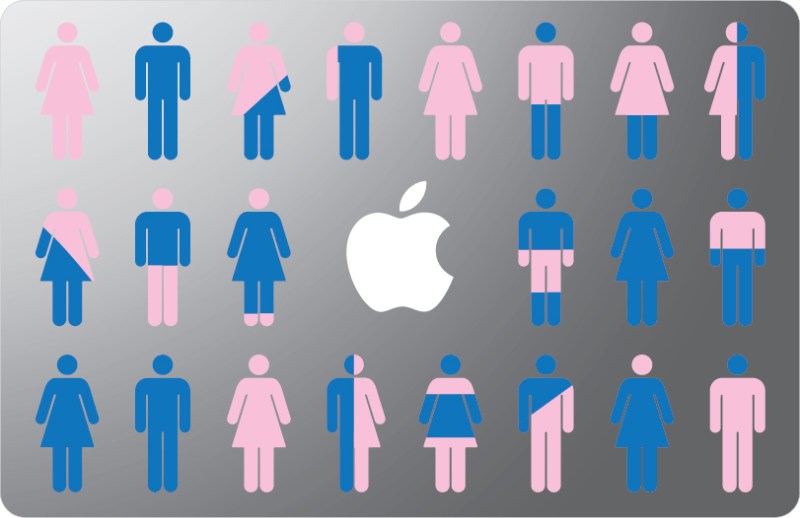On Jan. 21, the computer science (CS) department made a small change to its CSID form, which is used to create email aliases and usernames within the department. Previously, there was a question inquiring applicants of their sex, and before that one inquiring of gender; now the question has been removed altogether.

It seemed like an anticlimactic end to several months of discussion between the CS department, the School of Engineering, the LGBT Community Resources Center (LGBT-CRC) and the Title IX Office over how the CS department should obtain information about the gender of their students — or if they even need to.
A CSID authorizes students to use certain services and websites within the department, making it a de facto requirement for the major. At the beginning of the school year, one of the first questions on the CSID form asked students to select their gender from “male” and “female.” This question later added “a gender not listed here” as a choice and was made optional following a student’s request. But just before Halloween, the form switched out the gender-based question in favor of a sex-based question, with the options “male,” “female,” “intersex” and “prefer not to specify.” The change apparently overlooked non-binary students and left them without satisfactory application options.
Though the terms sex and gender are often used synonymously, they are very different. Sex refers to the features that distinguish men from women — hormones, reproductive organs, etc.—while gender (or gender identity) is defined as one’s personal identification with masculinity, femininity, both or neither. When the sex one is assigned at birth aligns with their gender identity, they are cisgender (i.e. Barack Obama, a cisgender male); if their assigned sex and gender identity differ, they are transgender (i.e. Laverne Cox, a transgender female). Some individuals choose not to identify with either gender, and may identify as one of a number of non-binary gender identities, including genderqueer, genderfluid and agender.
Furthermore, to be intersex is to have biological characteristics that belong to both male and female bodies, such as a combination of chromosomes other than the usual XY (male) or XX (female). Though an individual may be intersex, transgender, or even both, the two terms are not interchangeable.
The problem, then, with the sex-based question was that it left non-cisgender students with two answers that did not pertain to their gender identity, a third that referred to something else altogether and a fourth that was effectively a non-answer.
Offices search for a solution
The Daily reached out to administrators within the four aforementioned parties — sometimes to multiple people within the same office.
Within the CS department, Miles Davis, director of computing services, and Mehran Sahami ’92 M.S. ’93 Ph.D. ’99, associate chair of educational affairs, both wrote in separate emails that the gender question was meant to gauge the gender diversity of the CS department. (Just four months ago, The Daily reported that CS was the most popular major for women.)
In a statement to The Daily, Sahami wrote, “After a concern that [the gender] field was too constrained, it was decided to change the field to ‘sex’ with four possible values,” as opposed to the two offered in the previous gender-based question.
Davis added that the change was made after a “constructive exchange” between the student who requested the change and Benjamin Davidson of the LGBT-CRC. However, Davidson wrote that he was not consulted until after the question had already been changed from gender to sex.
“I told them that I advised against that approach,” Davidson wrote in an email to The Daily. “We discussed a range of possible alternatives to the gender binary with them.”
Davidson added that the CS department “expressed a desire to be more gender-inclusive and to do right by students” and was “pleased” to hear that the question was ultimately eliminated.
Thomas Kenny, senior associate dean for student affairs in the School of Engineering, was able to speak to The Daily in person. Kenny, who took his position at the start of the school year, stressed the School of Engineering’s commitment to understanding and appreciating diversity.
“I do see the diversity of the student population as something we are very interested in,” Kenny said. “I think it’s a big part of my challenge as associate dean to be more sensitive to the diversity that factors in students’ life at Stanford.”
Kenny added that, when he first became aware of the controversy surrounding the question in early October, he contacted Stanford’s Title IX Office. Zunich confirmed in an email that he and Kenny had conversed with Davidson, who “offered a number of valuable suggestions.”
“I believe that [Kenny] then used that information to … make a decision on how to move forward,” Zunich wrote.
“We’ve discussed this internally, and decided that there is no reason for us to be asking for this kind of personal information,” Kenny wrote in a follow-up email on Jan. 21 — several hours after the question was removed from the CSID form.
That said, Sahami wrote that the CS department “will get [gender] information … using data from other Stanford systems,” although he did not specify which systems.
A student speaks out
One student affected by the CS department’s actions and upset with how certain administrators handled them agreed to speak to The Daily on condition of anonymity.
The student, henceforth referred to as Sam, began to declare CS as their major at the end of September but was dismayed to find that the CSID form required them to select “male” or “female” as their gender. They exchanged emails with a number of administrators (including Miles Davis) who inquired what should be done to the form — that the gender question be made optional, or that it have more selections. The CS department added “a gender not listed here” to the choices for “gender” and made the question optional.
In an in-person conversation that Sam had with Claire Stager, student services officer within the CS department, about one week later, Stager said that the CS department had consulted with the LGBT-CRC (which had not yet occurred, according to Davidson) and that they intended to replace the CSID form’s gender question with a sex-based question — a change that, despite Sam’s objections, was indeed implemented by the end of October.
The Daily reached out to Stager several times to confirm the series of events, but she declined to comment, saying that she had “nothing else to add.”
A few days after their conversation with Stager, Sam sent an email to Persis Drell, dean of the School of Engineering, who then referred Sam to Thomas Kenny. Sam sent Kenny an email asking what could be done to make departments in the School of Engineering more inclusive to students of marginalized genders.
“The university has an opportunity here to show that its support for gender diversity in engineering extends to all marginalized genders,” Sam wrote in the email.
Kenny replied to Sam the following week, at which time the CSID form still asked for gender but included the “a gender not listed here” option. Kenny informed Sam that the School of Engineering was discussing the matter with the Title IX Office, among others.
Now that the form has dropped the question for good, Kenny hopes that the School of Engineering and the departments it oversees can continue to improve with respect to student diversity.
“We’re in a changing world, and we’re learning — sometimes on the fly,” Kenny said.
Contact Jacob Nierenberg at [email protected].
